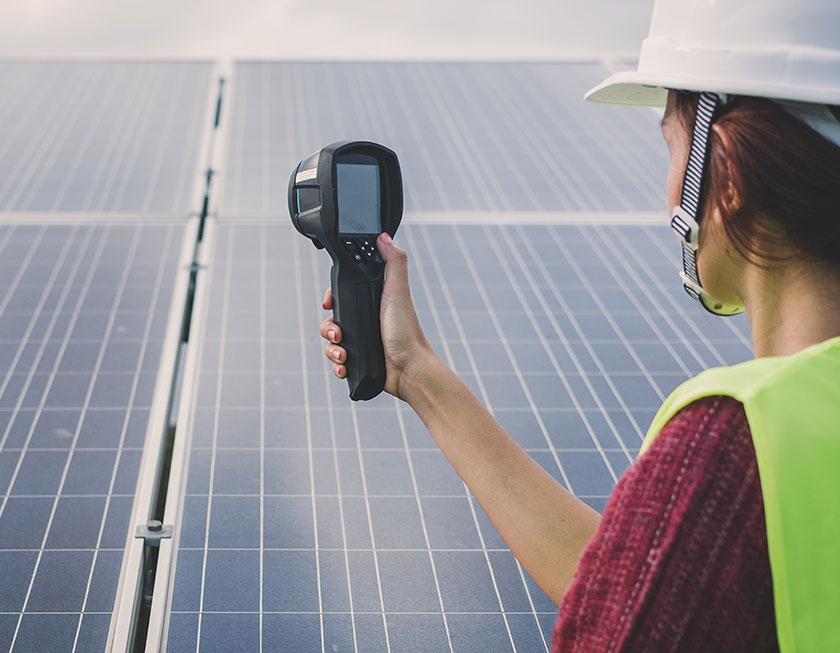4.5 Poly or mono crystalline solar: Choosing the best tech

In the previous article, we discussed two decisive factors that should be taken into consideration when we are buying a solar PV system. Let’s continue our discussion. Which is the best PV technology?
We may have to evaluate dozens of factors prior to making a decision, but having said that, capital cost is of paramount importance as no significant difference in the performance or lifespan between two PV technologies could be observed.
What does it mean?
Ten to one the cheapest product may be the most preferred in a typical case where all other factors have been shown to have a minor impact on the final decision you are going to make!
So, what is the cheapest panel type?
Initial cost needed: pc-Si PVs are cheaper than s-Si PVs
The Czochralski process which is used to produce s-Si results in a huge amount of waste silicon. Further, the manufacturing process of s-Si solar PVs involves a number of complicated, energy-intensive steps. Unlike the s-Si PV manufacturing process, the process used to fabricate pc-Si PV is relatively straightforward and less energy intensive. And it generates less amount of waste silicon. So, pc-Si PVs are involuntarily cheaper than s-Si PVs even though we want s-Si PVs to be the cheapest as they are the most efficient.
Appearance: pc-Si solar PVs are less aesthetically pleasing than s-Si PVs
pc-Si solar PVs have a speckled blue color and an irregular look. As such, they are less aesthetically pleasing than mono crystalline silicon and thin film solar PVs. Some people, indeed, hate their miserable look whilst some others do not concern on it at all. s-Si solar PVs, on the other hand, appear black in color and have a regular, aesthetically pleasing look.
Which technology fits my solar energy plan?
This explanation is just to have a simple idea about how to choose the best panel type. First, let’s take a look at the following table. It summarizes what we discussed above.
Table 01: Key upsides and downsides of s-Si and pc-Si solar PV technologies

Relatively speaking, s-Si solar panels tend to be more efficient at converting solar energy into electricity and as such, they require less amount of space. Not only that s-Si solar panels do not annoy your eyes or mind though pc-Si solar panels are quite aesthetically unpleasant. However, the dark side of s-Si solar panels is that they are expensive than the pc-Si rivals. This is what is hindering the growth of s-Si solar PV market share and what is behind the large market share of pc-Si solar PVs. The cheaper pc-Si PV technology allows us to install more panels than s-Si panels for the same investment. This nicely outweighs the main drawback of pc-Si solar panels: Being less efficient than s-Si solar panels.
Making the final decision
Now we have a rough idea of how to choose the best solar panel type. Taking all above-discussed facts into consideration, we can make followings general recommendations.
- Monocrystalline solar panels are expensive but more efficient and require less amount of space. Therefore, they are suitable for a location where available space is limited.
- If you have a large rooftop it would be wise to adopt the cheapest solution: pc-Si solar technology. It is, of course, less efficient and takes up more space. But it seems to be the most favorable PV technology for a location where space availability is not a serious challenge.
- If you are investing in a utility-scale solar PV project, your key concerns would be achieving a higher return on your investment and shorter payback time. Appearance of the solar panels is not a big issue since the ultimate goal of such investment has nothing to do with what your solar panels look like. Simply, the cheaper pc-Si solar panels would be the best choice.
- In a case where you have a large rooftop (Fits for pc-Si solar panels) but still worry about the visual look of the rooftop, then s-Si solar panels would automatically be your handpicked choice. But you should be able to afford them.
- If unpleasant look is the only concern, it would not be wise to choose expensive single crystalline solar panels. Think thrice and move forward with your plan. Anyway, it depends on your personal taste.
Keep in mind!
Before we come to the final decision, we need to weigh the impact of each key factor and some features pertaining to two PV technologies. In addition, your specific requirements must be given a hearing and the site needs to be inspected by an expert in the field. But these facts should not keep you up in the night. Ask your installer for technical assistance and site-inspection. They are always ready to help you find the best choice for you.
